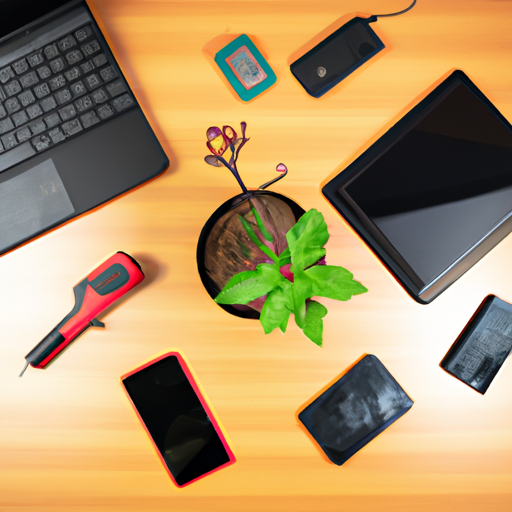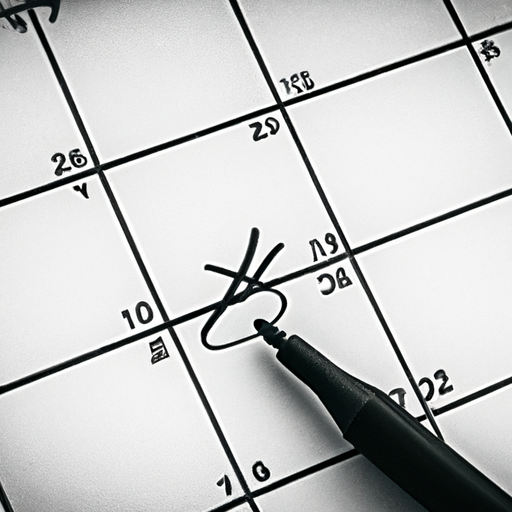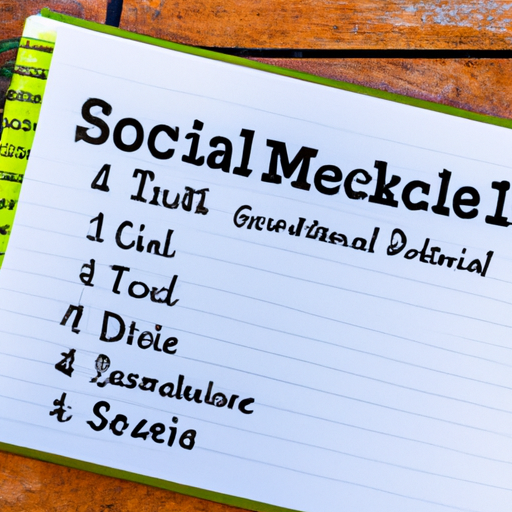Note: As an Amazon Associate I earn from qualifying purchases.
My thoughts reading ‘Digital Minimalism: Choosing a Focused Life in a Noisy World’
Introduction
I recently embarked on a digital declutter, inspired by Cal Newport’s concept of digital minimalism. I must admit, the constant buzz of notifications and the lure of infinite content had begun to wear me down. This journey was about rediscovering the value of my time and attention. It’s been a challenge, but the clarity and quality of life I’ve gained were well worth the effort.
Prices
Check prices of the 'Digital Minimalism: Choosing a Focused Life in a Noisy World' on:
The Lure of the Digital World and its Impact on Our Lives

The digital world provides us with a complex situation. On one hand, it offers incredible benefits such as instant global communication, endless entertainment options, and easy access to knowledge. But on the other hand, it also presents risks including addiction and distractions that can lead to a significant portion of life being spent online, disconnected from the physical world.
When I think about the time I’ve spent scrolling through my feed or getting lost in irrelevant content, it’s apparent that these mechanisms designed by tech companies are not intended to improve my life but to take control of my focus. This realization has been eye-opening, if not alarming.
Here’s a clear explanation of my thoughts on this subject:
Pros:
We can easily obtain information and education with a few clicks or taps.
The ease of communication with loved ones, especially in long-distance scenarios.
The world is becoming more connected. People and cultures are no longer confined by geographical boundaries.
Useful digital tools make daily tasks and increasing productivity easier.
Cons:
The risk of addiction through engineered attention-grabbing features.
A decrease in face-to-face socialization and a loss of deep connection with others.
Negative effects on mental health are significant, leading to increased anxiety and depression.
People unknowingly give up their privacy for online services.
Reading Cal Newport’s “Digital Minimalism” made me aware of my excessive use of apps and digital platforms that primarily aim to grab my attention rather than enhancing my life. I now believe in adopting a minimalistic technology approach as it has shown benefits such as improved focus, stronger relationships, and more rewarding leisure activities.
It has been a challenging experience managing my technology use. The prevalence of technology in daily life requires ongoing awareness to control my digital consumption. Finding the optimal balance is an ongoing process. However, I believe the advantages of being deliberate with technology outweigh the disadvantages.
At first, giving up the habit of constantly checking my phone was challenging. But I’ve come to realize that my mind can adapt and even enjoy periods of digital detox. In our current society, it takes deliberate effort to transition from being a consumer to an active participant in life without the distraction of digital devices.
In choosing this path, I am part of a community that aims to leverage technology for our benefits while minimizing its negative impacts. This means we must carefully manage our digital consumption, much like monitoring our food intake on a diet. By doing so, we can harness the power of technology to enhance our lives without being consumed by it.
Embarking on the Digital Declutter Journey

Embarking on the digital decluttering journey revealed the extent of distractions from my digital devices. Cal Newport’s “Digital Minimalism” changed how I view social media, apps, and smartphones, which often consume my time and mental resources. Newport convincingly argues that these platforms are intentionally designed to keep us engaged, making their use more than a casual habit but a worrying addiction.
Here’s what I learned from the start:
- Social media platforms are designed to maximize our time and mental focus. Engaging in meaningful activities instead of aimless scrolling can result in a more fulfilling life. Solitude is essential as it enables reflection, relaxation, and the ability to clear one’s mind from digital distractions.
However, Newport’s book provides valuable guidance on limiting digital platforms’ influence. He recommends a thoughtful method: assess each tool’s benefit and eliminate those inconsistent with personal values or enhancing life positively.
Despite the valuable insights, I acknowledge some concerns. The author’s frequent emphasis on his no-social media approach might come across as lecturing. Also, the detox may feel generic and not cater to everyone’s unique digital lifestyle.
Then there’s the issue of white-collar advice not addressing various socioeconomic backgrounds. Not everyone can choose how they consume digitally due to economic constraints or work demands. This reality is sometimes overlooked in favor of a more optimistic perspective.
Still, Newport advocates for personal responsibility in managing our digital lives. His call to action encourages prioritizing digital activities for a more intentional and fulfilling life. In my effort to simplify my digital environment, I’ve begun:
I’ll remove social media apps from my phone and use them only on desktop if required.
Set up regular chat times with loved ones for deeper connections.
Implementing electronic time-outs where devices are turned off at a designated hour.
Though it’s difficult, the practice of digital minimalism helps me manage the overwhelming digital age. I aim to control how technology affects my life instead of being controlled by it. This becomes increasingly important as platforms become even more integrated into our daily routines.
Rediscovering Solitude and High-Quality Leisure

Embarking on a digital declutter revealed how chaotic my life had become. After reading Cal Newport’s “Digital Minimalism,” I reconsidered the impact of social media and digital devices on my personal space. The ideas of selective tech usage and mindful consumption resonated with me, prompting me to assess what is truly necessary.
Let me run down the benefits I’ve observed:
Enhanced Focus: Cutting down on digital noise has cleared mental clutter, making room for deeper concentration.
Engaging in Quality Family Time has become even more rewarding as there are fewer interruptions from technology.
Reviving Hobbies: Reading a book or playing the guitar provides a satisfying feeling.
However, it’s not without its challenges:
FOMO: The dreaded ‘fear of missing out’ can creep in, especially when everyone around seems up-to-date with the latest online buzz.
Inconvenience: Let’s face it, I miss the ease of pulling up a map or reaching someone instantly when needed.
Yet, I maintain these issues are small setbacks in an overall enjoyable experience.
Rediscovering solitude brings new insights. Newport’s promotion of alone time is almost forgotten. Avoiding earbuds on walks, podcasts in cars, and avoiding scrolling during lunches are initially challenging but have a calming effect.
Much like Abraham Lincoln, I now appreciate the value of solitude for reflection. Initially, it was challenging to resist checking notifications and updates. However, taking charge of my digital life allows me to reclaim significant amounts of time. This newfound freedom paves the way for enjoyable leisure activities.
Personally, I’ve rediscovered drawing and painting, a hobby I neglected since college. Studies from universities like UC Berkeley show engaging in creative activities can boost positive emotions.
Newport’s book raises concerns about modern technology, urging caution. While his analogy of “tobacco farmers in T-shirts” resonates, we must strike a balance. Technology should enhance our lives instead of consuming us completely.
In summary, this path may no longer be uncommon, but it remains challenging. The determination needed to avoid slipping back into digital idleness is demanding and continuous. However, the advantages outweigh the initial discomfort, in my opinion—specifically, being without a phone while walking.
Practical Steps to Implementing Digital Minimalism

After understanding the principles of Digital Minimalism, it made me realize the importance of intentionality in my digital life. Here are some practical steps I’ve taken that strike a balance between connectivity and personal well-being.
Identifying core values: I needed to consider deeply what mattered most to me before making any changes. Values such as time with family, productivity at work, and personal development stood out.
Evaluating digital tools: I examined my use of digital tools, considering if they aligned with my values. Apps that didn’t meet this criteria were removed.
Setting: I established tool usage limits. For instance, I checked emails only during specific time frames instead of frequently throughout the day.
Committing to a digital declutter: I followed Cal Newport’s 30-day plan and took a break from technology. The absence of digital distractions made me more focused on the present and increased my productivity.
Prioritizing solitude: I focus on seeking quiet moments, such as taking walks without my phone. These instances provide mental clarity for reflection and idea generation.
Quality: I chose activities that improved my leisure time, such as playing the guitar and reading good books, instead of mindlessly scrolling.
While these steps have had positive results in improving my productivity, it’s crucial to acknowledge the challenges that come with implementing them. The fear of missing out, or FOMO, can be particularly powerful and make it difficult to resist checking notifications. I’ve also heard from friends who face similar struggles due to their jobs requiring continuous connectivity.
The drawback is the initial discomfort. The first few days felt strange as if something was missing. I wondered if someone was trying to contact me or what was happening in the world. However, these fears did not materialize into any real consequences.
Now, I’m not saying digital minimalism will solve all life’s problems, but it’s a solid start to reclaiming some of the time and mental energy that we’ve unwittingly surrendered to our devices. It’s about finding that sweet spot where technology serves you, not the other way around.
You might think reducing tech use will leave you less informed and disconnected. I’ve discovered the opposite experience. Now, I choose which information to consume deliberately, making interactions deeper. Limiting tech improves focus and creates time for essential tasks.
If you’re planning a similar endeavor, begin modestly and have patience with yourself. The reward is significant.
Reflections on a Post-Digital Declutter Life

Embarking on a journey of self-discovery through digital decluttering, I have experienced notable shifts in my daily routine. This transformative process was not just about eliminating digital excess but also unearthing deeper aspects of myself. Here are some observations for those intrigued by the path of digital minimalism:
Pros:
Enhanced focus and productivity
Spend more time with loved ones.
Rediscovery of old hobbies and passions
I now feel less anxious and calmer.
Cons:
Initial withdrawal symptoms and fear of missing out (FOMO)
To keep some relationships strong, more work is required.
Possible misunderstandings due to less frequent online interactions
In the beginning, it felt like I was fighting against my natural impulses to check my phone for notifications that simply weren’t there anymore. But after the initial shock, there was a noticeable increase in mental clarity. This was a stepping stone to embracing minimalism, much like what is described in ‘Goodbye, Things: The New Japanese Minimalism’, a book that delves deep into cutting out the unnecessary to focus on what’s truly important. I wasn’t jumping from one digital distraction to another, which meant I could channel my energy into my work and personal projects. Who knew that putting my phone on the other side of the room while I worked would make such a difference?
In the absence of technology’s constant interruptions, real-life connections deepened. Dinners with family and friends transformed into meaningful interactions, allowing us to connect on a deeper level. Leisure time became more enriching, as I could fully immerse myself in activities such as reading, painting, or long walks, without the need to document or share them online. These moments, previously fragmented by digital distractions, were now mine alone to savor and appreciate.
I have to admit, this transition to a more digital world brought about a bit of FOMO for me at first. Interactions often revolve around online experiences nowadays, leaving me feeling somewhat isolated and questioning what I was missing out on.
Maintaining social connections during this period proved to be a significant challenge without the convenience of likes and comments. I had to make a conscious effort, scheduling regular meaningful exchanges through phone calls and arranging face-to-face meetings. Some acquaintances faded away, but the relationships that truly mattered deepened and became more meaningful through these valuable exchanges.
The experience may not suit everyone, requiring self-discipline and the ability to filter out digital distractions, which can sometimes be as persistent as a buzzing smartphone. If you find yourself constantly interrupted by notifications or feeling overwhelmed by the digital world, consider a digital declutter. This isn’t about banning technology but using it mindfully to add value to your life and minimize unwanted interruptions that may hinder your focus.
Remember, it’s not just about cutting out the noise; it’s also about what you fill that newfound space with. So, whether it’s grabbing that book you’ve been meaning to read off the shelf or dusting off the old guitar, embrace the quiet. It might just surprise you with what you can hear in the silence.